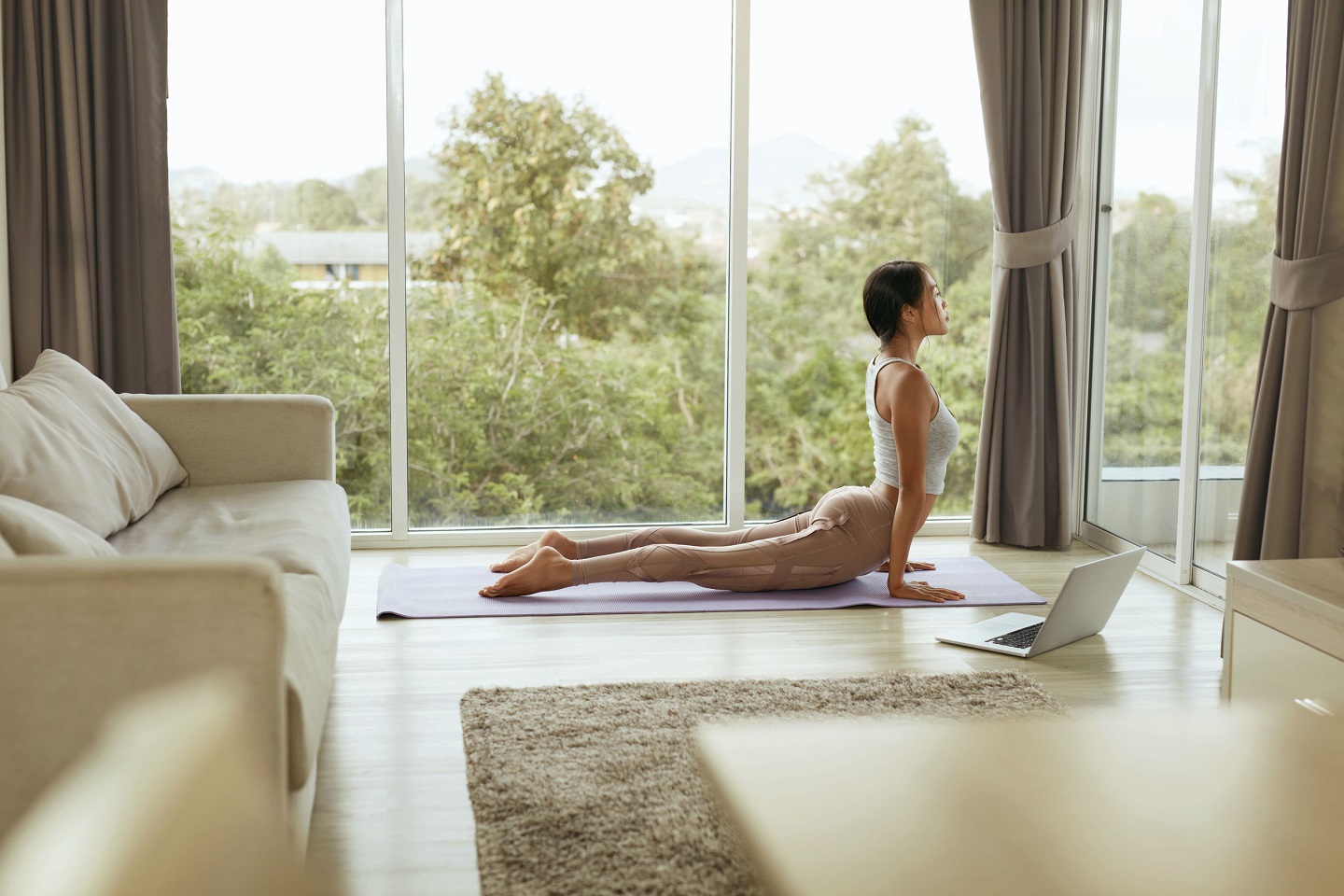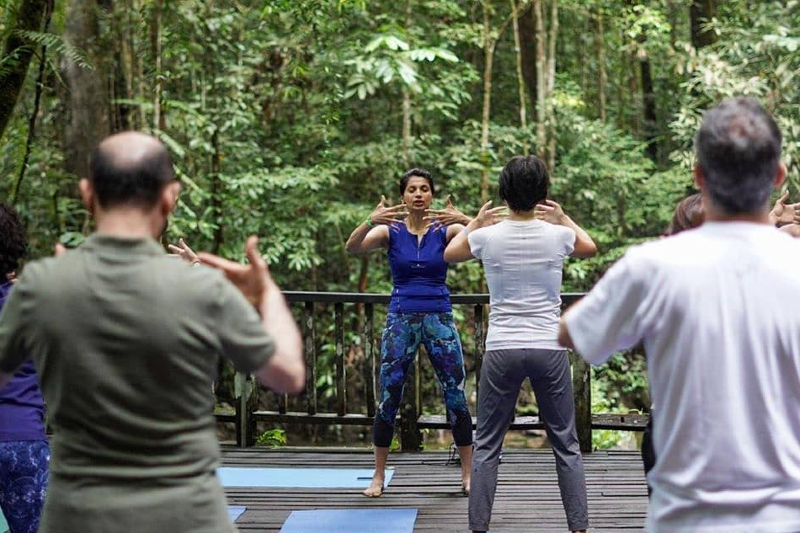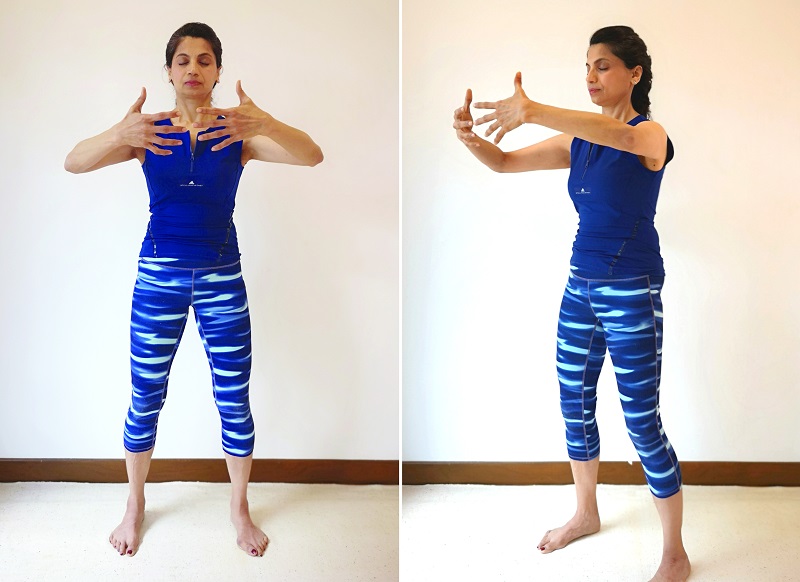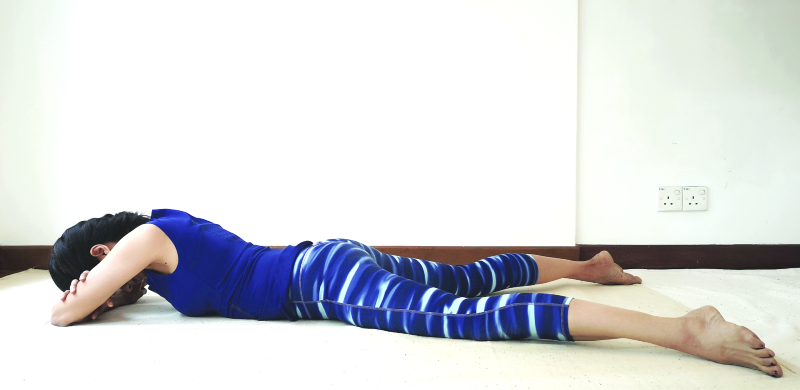
Both the morning and evening practices are focused on breath awareness to still the mind and achieve calmness
Yoga is not about touching your toes or getting into contorted postures. It is a systematic path that uses our body and breath to access the mind and ultimately lead to liberation.
The yogis teach us that our true nature as pure consciousness is bliss. We are not meant to suffer. We suffer because we identify with the phenomenon of “continuous change”. As we know, everything is cyclical and subject to change. Nothing in form remains the same. So, how can we stabilise our minds in the midst of change and uncertainty? Within each and every one of us is the “unchanging state” or pure bliss. To tap into it, we must dive deep within and unravel that bliss.
The deep dive within requires us to still the mind. And one of the best ways to start is to become aware of our breath. The breath and mind are tied to each other like kite and string. Wherever one goes, the other will follow. If the breath is calm, the mind will be calm and vice versa. The two aspects of “continuous change” versus the “unchanging state” are our breath and awareness respectively. The breath is changing and happening from moment to moment in real time. If you simply “catch” this happening within you and stay with it with sustained attention, you will connect to that unchanging field of awareness.
shilpa_ayu_wellness.jpg

The current situation with the pandemic has filled all our minds with fear and anxiety. Anxiety and fear causes us to tighten our bellies and breathe using our secondary breathing muscles such as the chest and shoulders. This stimulates our “fight/flight” response and brings about an agitated and confused state of mind. The daily practice of yoga and meditation, for as little as 20 minutes a day, will make all the difference in how we handle the anxious and fear-ridden mind. It can be done by anyone and requires very little space — 2ft by 6ft is enough — the space occupied by a mat!
The Yogshakti method of integrative yoga combines yogic practices with Eastern traditions of Tao and Zen to enable people to use their body and breath to achieve calm and stillness of the mind. This in turn has great bearing on general health and well-being. Below are two simple practices from Taoism and yoga that can be done by anyone (with no contraindications).
Morning Practice to energise and awaken your inner sun
Fear and anxiety causes us to overthink, much to our detriment. This forces us to breathe too much, depleting us of our life force/energy. To relax the thinking mind and ground ourselves in the present moment, I recommend a practice called the “Hugging Tree”. It is a powerful Taoist practice that I integrate with yoga. It can easily be practised by anyone and it is most healing!
To do this, try to wake up before sunrise or as the sun is rising (7.30am to 8am is a good time) to tap the power and energy of the sun.
THE POSTURE: Stand in front of the sun on your balcony or any other place where you can access the East. Then in the standing posture, lift the inner arches of your feet and turn out your thigh-bones slightly and soften the knees. This will enable your tail-bone (the lowest vertebrae of your spine) to release down. When you do this, you will notice your lower belly lift and your pelvis become neutral. When this happens, you will be “connected” to your power centre, which is known as the Dan Tien by Taoists. Then, raise your arms to the level of your heart (as below) and create a circle (ensure shoulders are relaxed) with your fingers apart. Keep a little gap between your hands. Then close your eyes, raise your tongue to the roof of the mouth; cultivate an inner smile (relaxing the muscles of your face).
hugging_tree.jpg

THE BREATH: Pay attention to your breath in your nostrils with eyes closed and breathe (only through the nose, your mouth must be closed) as quietly and lightly and slowly as possible. Allow your inner gaze to connect to your Dan Tien, and let your mind observe the breath either in your nostrils or in your belly. Hold the position for as long as possible. You may have some discomfort at first in your arms but feel as if your arms are being supported on a big ball. Hold the position and watch your breath for as long as you can. The Taoist masters stay in this posture for up to 45 minutes and break into a sweat without moving.
Try this each day and begin with five to 10 minutes. This simple meditation practice awakens the Dan Tien, which Taoists also refer to as the “burning cauldron”, or simply the storehouse of energy/chi/prana — the elixir of longevity and wisdom. The practice, done every morning, will energise you, still your mind and enable you to reconnect to the present moment.
Evening Practice to calm and relax your body and mind
Induce slow, smooth diaphragmatic breathing. This yogic technique, which is done in a pose called the Crocodile Pose, originates from the Himalayan Master, Swami Rama. I have been using this technique for more than 25 years with my students and have seen great results for breathing issues, ranging from anxiety to insomnia, among other things. We also use this as a prelude to seated meditation.
THE POSTURE: Lie on your belly (see picture) and cross your upper arms, placing your palms on your upper arms. This will enable you to stay slightly propped up. Relax your shoulders and make sure you are comfortable. Then rest your forehead on your wrist and feel the contact of your belly against the floor or mat or a firm mattress. Ensure that the chest is slightly off the floor/mat as you remain propped up. This posture will naturally slow your breath and force you to breathe diaphragmatically.
crocodile_pose.jpg

THE BREATH: Now pay attention to the movement of the breath in your belly as you feel it expanding when you inhale and contracting as you exhale. Try to remain conscious of each breath and, with time, notice how your breathing patterns, which may have been quick and jerky, begin to slow down and become smooth and even. The transitions between the breaths become smooth and the breath moves like a smoothly turning wheel, where the inhalation flows into the exhalation and the exhalation flows into the inhalation. This will begin to relax your mind and you will notice how closely your breath is linked to your mind. The calmer and slower your breath, the calmer your mind and the slower the activity of the mind, giving you the much needed rest from thinking.
This practice will provide relaxation and enable the mind to think with clarity. The yogis remind us that pauses and jerks as in irregular breathing will disturb the heart rhythms and is detrimental to the heart. Therefore, slow, smooth and even flowing breath is fundamental to good health.
Both the morning and evening practice are focused on breath awareness to still the mind and achieve calmness and clarity of thought. Yogshakti’s Integrative Yoga uses multifarious tools from various Mind-Body traditions to unravel the bliss within yourself. Every technique in the practice is a means towards this end.
Shilpa Ghatalia is founder of Yogshakti, a registered Yoga Alliance (USA) school in Kuala Lumpur. She has created a series of videos on meditation that will take the practitioner right from learning how to sit to breathing and other related practices and practice routines for meditation and stilling the mind. Over the last 30 years, she has studied different styles of Hatha Yoga in her quest to find a system that leads to spontaneous meditation. In addition to studying with some of the great yoga masters, she also trained with a Taoist and Zen master to integrate its practices with yoga. She now trains teachers in this style of yoga both nationally and internationally. Follow Ghatalia at @yogshakti_ (Instagram) or Yogshakti (Facebook).
This article first appeared on April 6, 2020 in The Edge Malaysia.


